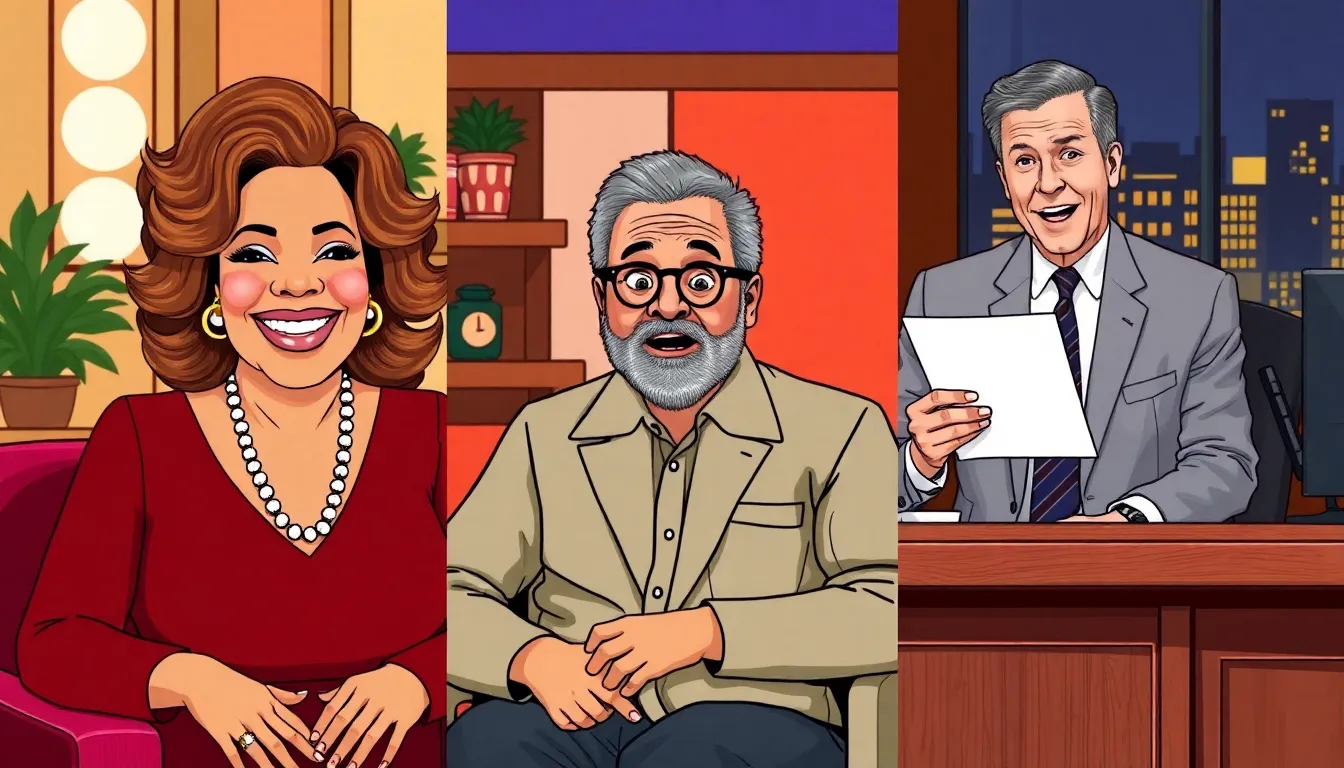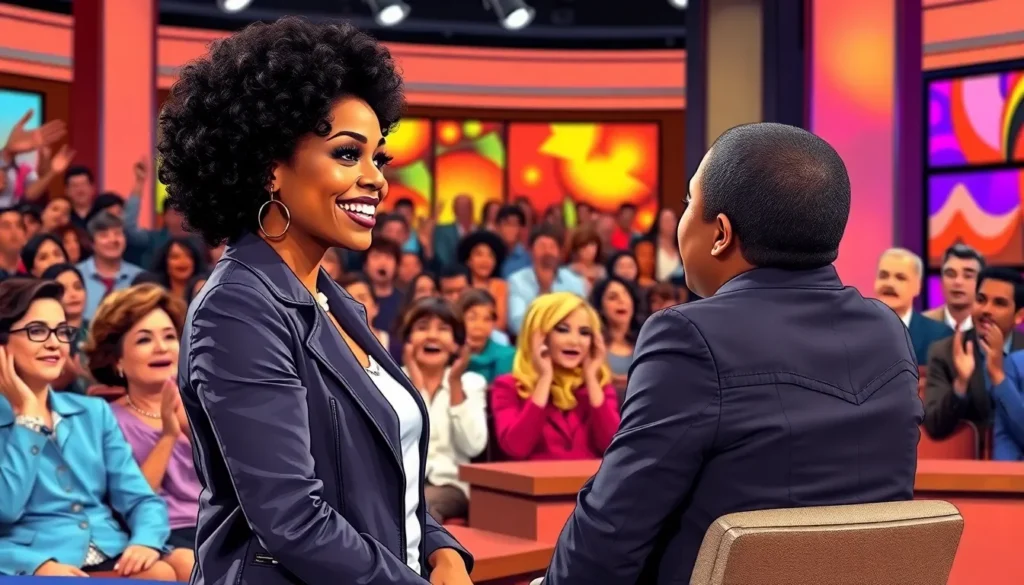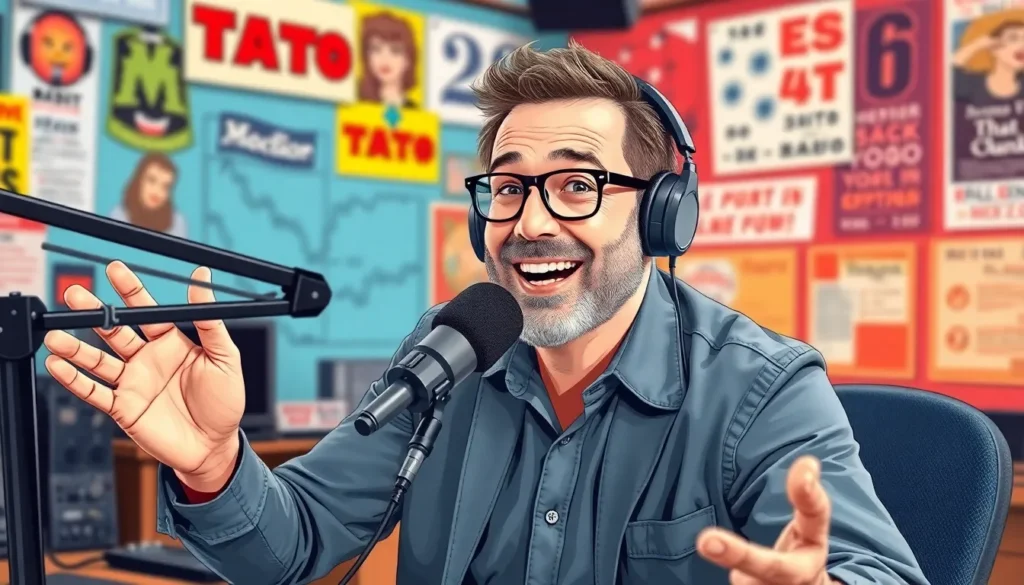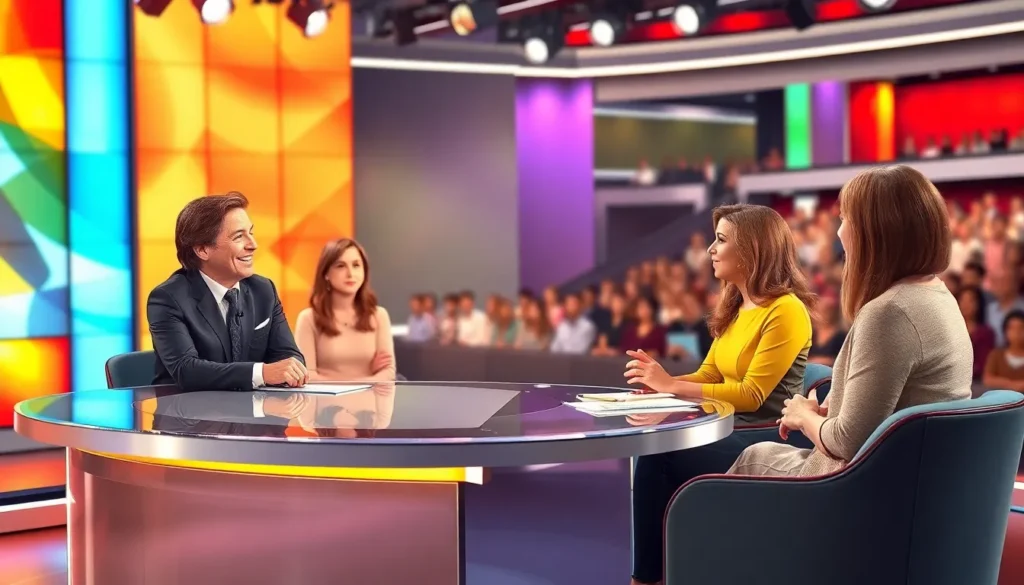The 90s were a golden era for talk shows, bursting with outrageous moments and unforgettable guests. From Jerry Springer’s jaw-dropping revelations to Oprah’s heartfelt confessions, these shows weren’t just entertainment; they were a cultural phenomenon. Picture this: a world where wild stories and celebrity antics ruled the airwaves, and everyone had an opinion on the latest scandal.
90s Talk Shows
The 1990s marked a transformative era for talk shows, as they became powerful platforms for diverse voices and outrageous narratives. Jerry Springer popularized sensationalism, featuring shocking revelations and chaotic confrontations. Oprah Winfrey emerged as a media icon, addressing serious issues while also showcasing inspiring stories of resilience.
Phil Donahue paved the way for audience participation, bringing everyday people into discussions on topics like politics and social issues. Sally Jessy Raphael added a mix of humor and personal stories, making her show relatable and engaging.
Many talk shows utilized themes of personal drama, family feuds, and celebrity gossip, captivating viewers with their unpredictability. Shows frequently included emotional confrontations and surprise guest appearances, creating an atmosphere of excitement that generated discussions well beyond the airwaves.
Cultural trends often reflected in the topics covered, from the rise of reality television to discussions on race and gender equality. As a result, these programs shaped public opinion and influenced social norms during this vibrant decade.
Audiences eagerly anticipated episodes, drawn in by the allure of dramatic narratives and celebrity guests. Many viewers gathered around their television sets, defining a communal experience that united different demographics through shared viewing.
The legacy of 90s talk shows continues to resonate, with their impact seen in the reality programming that dominates today’s media landscape. These shows not only entertained but also sparked conversations about societal issues, leaving an indelible mark on television history.
Iconic Hosts and Their Shows

The 1990s showcased a range of unforgettable talk show hosts who shaped the television landscape with their dynamic styles.
Oprah Winfrey
Oprah Winfrey redefined daytime talk shows with her engaging approach. She tackled personal struggles, cultural challenges, and societal issues, fostering a warm environment for guests. Winfrey’s genuine empathy resonated with millions. Her show often featured inspirational stories, which encouraged viewers to pursue their dreams. By focusing on self-improvement and healing, she created a loyal audience that connected deeply with her message. Notably, Winfrey’s book club influenced the publishing industry, making bestsellers overnight. Her influence extended far beyond television, establishing her as a cultural icon.
Jerry Springer
Jerry Springer brought an entirely different flavor to the talk show scene. Known for outrageous topics, his show featured shocking revelations and dramatic confrontations. Springer embraced sensationalism, drawing in viewers with unpredictable content. He often hosted guests embroiled in scandals, resulting in chaotic exchanges and unexpected twists. The outrageous nature of his show sparked controversy and conversation across America. Although criticized for its sensationalism, Springer’s influence on reality television cannot be overstated. His legacy laid the groundwork for a new era of storytelling centered on conflict and emotion.
David Letterman
David Letterman changed the late-night talk show format with his unique blend of humor and irreverence. He incorporated innovative segments like Stupid Pet Tricks and Top Ten Lists, which became staples of his show. Letterman’s witty interviews captivated audiences, often leading to unexpected moments and candid conversations. Many celebrities appeared on his show, appreciating his offbeat style and charm. The Late Show with David Letterman featured a mix of comedy sketches and insightful commentary, showcasing Letterman’s versatility. His impactful career set a new standard for late-night programming, influencing numerous successors in the industry.
Cultural Impact of 90s Talk Shows
The 1990s talk shows influenced societal norms and discussions significantly. Programs tackled sensitive topics such as relationship dynamics, health issues, and personal trauma. Viewers engaged with these issues, often reflecting their own experiences. The raw emotions displayed on screen sparked greater awareness of mental health and social challenges. Audiences developed a sense of community, discussing episodes and their themes long after airing. This communal aspect fostered open conversations about taboo subjects, breaking down longstanding barriers.
Influence on Society
Talk shows served as platforms for pressing societal issues, influencing public perception on numerous matters. High-profile guests shared stories about abuse, addiction, and identity crises. These narratives resonated with viewers, often prompting them to seek help or change their perspectives. Jerry Springer’s outrageous themes highlighted human behavior’s extremes, thus initiating conversations on social morality. Oprah’s heartfelt discussions emphasized empathy and understanding, encouraging viewers to reflect on their own lives. Such dialogues often transformed the cultural landscape, shaping how people understood relationships and personal challenges.
Representations of Diversity
Diversity represented a key focus for many 90s talk shows. Hosts featured guests from varied backgrounds, allowing a wide range of experiences and perspectives to be shared. Conversations about race, gender, and sexuality broke through mainstream media’s traditional confines. Oprah Winfrey, for instance, consistently promoted stories emphasizing black excellence and women’s empowerment. Her approach encouraged visibility for marginalized communities. Shows like The Montel Williams Show often highlighted issues affecting minorities, fostering empathy among diverse audiences. This representation helped pave the way for greater inclusivity in media, resonating with viewers across different demographics.
Evolution of Talk Shows in the 90s
The 1990s witnessed a dynamic shift in talk shows, transforming their format and audience engagement.
From Traditional to Tabloid
Traditional talk shows centered around informative discussions and celebrity interviews. However, in the 90s, programs shifted toward sensationalism and controversy. Jerry Springer’s show exemplified this tabloid-style approach by featuring outrageous topics and confrontations that captivated audiences. As a result, shocking revelations became a staple, attracting viewers eager for drama. Oprah Winfrey still focused on significant social issues but balanced this with engaging storytelling that drew in large audiences. Sally Jessy Raphael blended humor and relatability, making her program stand out. The emphasis on sensationalism redefined viewer expectations, blending entertainment with provocative content that challenged societal norms.
Shift in Audience Engagement
In the 90s, audience engagement evolved, moving from passive viewership to active participation. Interaction increased through live studio audiences who voiced opinions and asked questions on air. Phil Donahue pioneered this model, encouraging viewers to share their experiences while fostering a conversation. Call-in segments and social media interactions began emerging, further enhancing viewer involvement. These formats allowed audiences to feel more connected to the stories shared on screen. The unpredictability of heated debates and emotional confrontations resonated strongly with viewers. This shift created communal experiences as people gathered to discuss sensitive topics that resonated with their own lives, reinforcing the shows’ cultural impact.
Legacy of 90s Talk Shows
90s talk shows left a profound impact on programming, shaping the landscape of television for years to come. Their influence can be seen in countless formats today that prioritize personal stories and sensational content.
Lasting Effects on Modern Television
Modern television still reflects the legacy of 90s talk shows. Formats that emphasize personal stories often trace their roots back to this era. Reality television, thriving on conflict and emotional engagement, gained momentum because of these shows. Programs that tackle family dynamics and social issues follow a similar path established by iconic hosts. Sensationalism, a hallmark of 90s talk shows, continues to attract viewers and generate buzz in today’s media.
Nostalgia and Revival in Media
Nostalgia for 90s talk shows influences current media trends. Reboots and specials highlight classic formats, appealing to audiences longing for that era. Networks frequently curate content that embodies the excitement and drama of those shows. Popular culture references to iconic moments keep the spirit alive in conversations and creative works. This revival resonates particularly with viewers who experienced the original shows, blending memories with modern storytelling techniques.
Conclusion
The impact of 90s talk shows extends far beyond mere entertainment. They shaped cultural conversations and challenged societal norms, creating a space for diverse voices and stories. With hosts like Oprah Winfrey and Jerry Springer at the helm, these shows captured the essence of the decade’s spirit, blending sensationalism with heartfelt narratives.
Today’s media landscape still reflects the influence of this era, as reality television thrives on the same principles of conflict and emotional engagement. The nostalgia for 90s talk shows continues to resonate, reminding audiences of a time when television sparked discussions and united viewers from all walks of life. The legacy of this transformative decade remains alive, influencing how stories are told and experienced in modern media.



